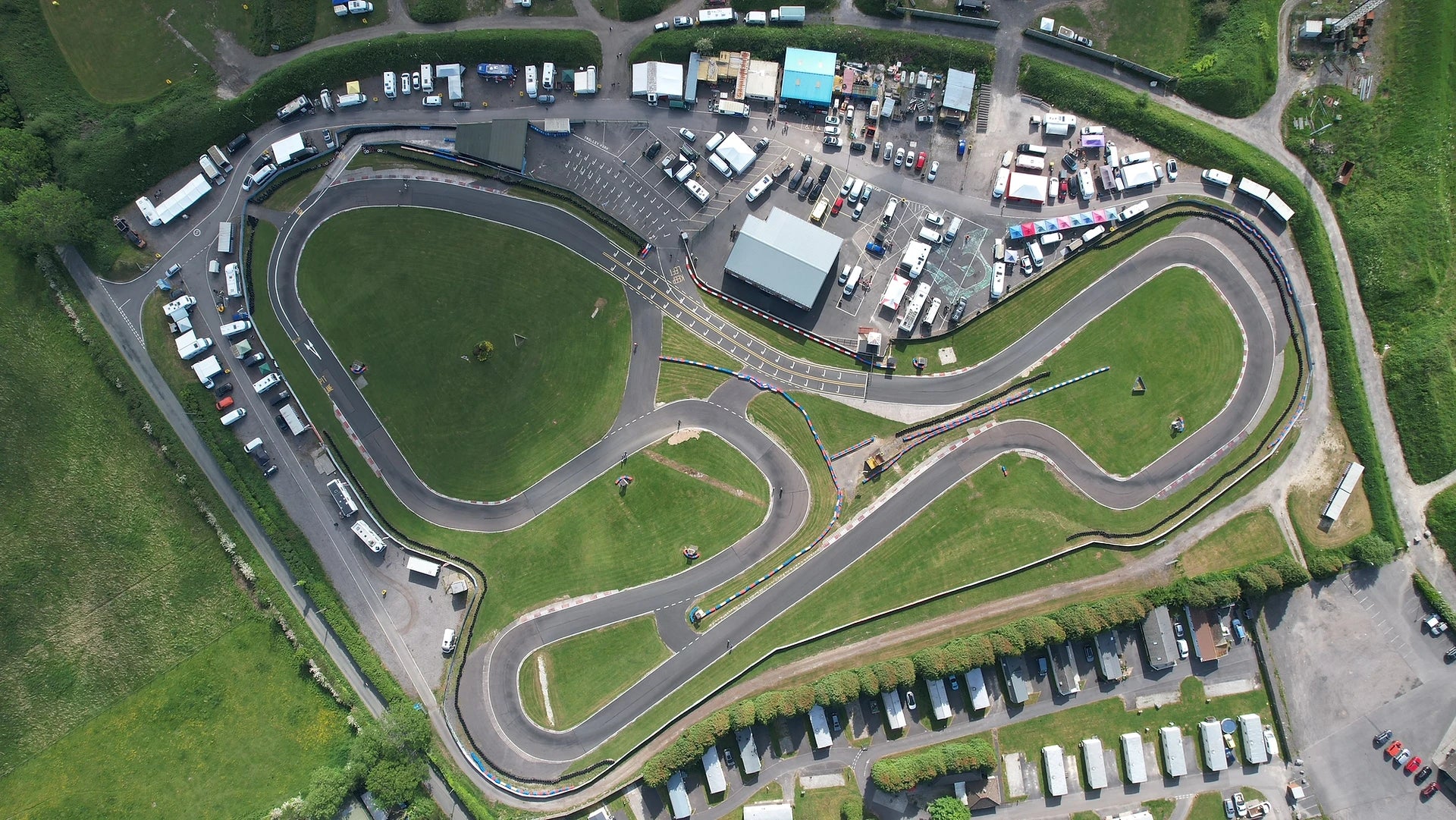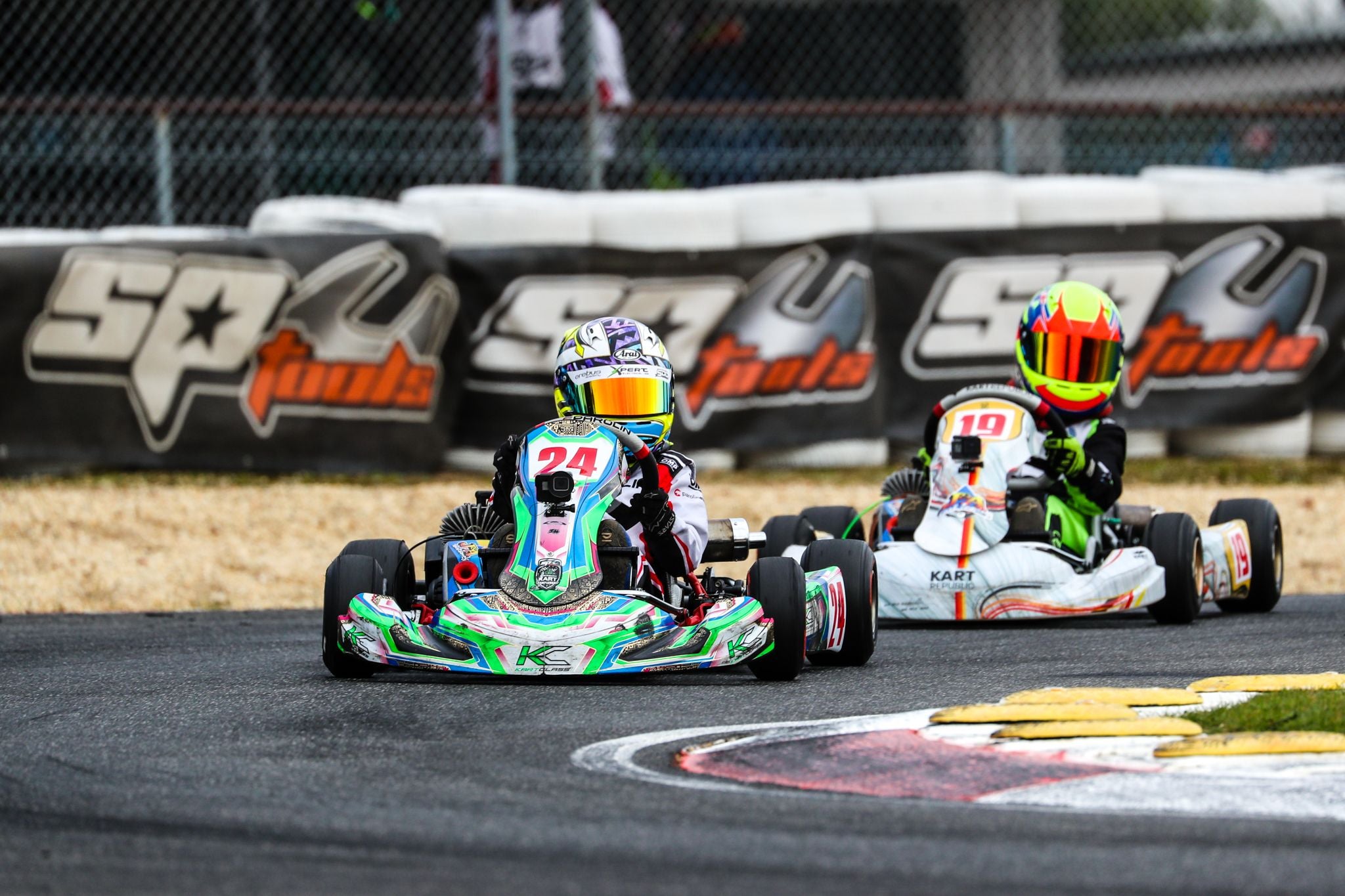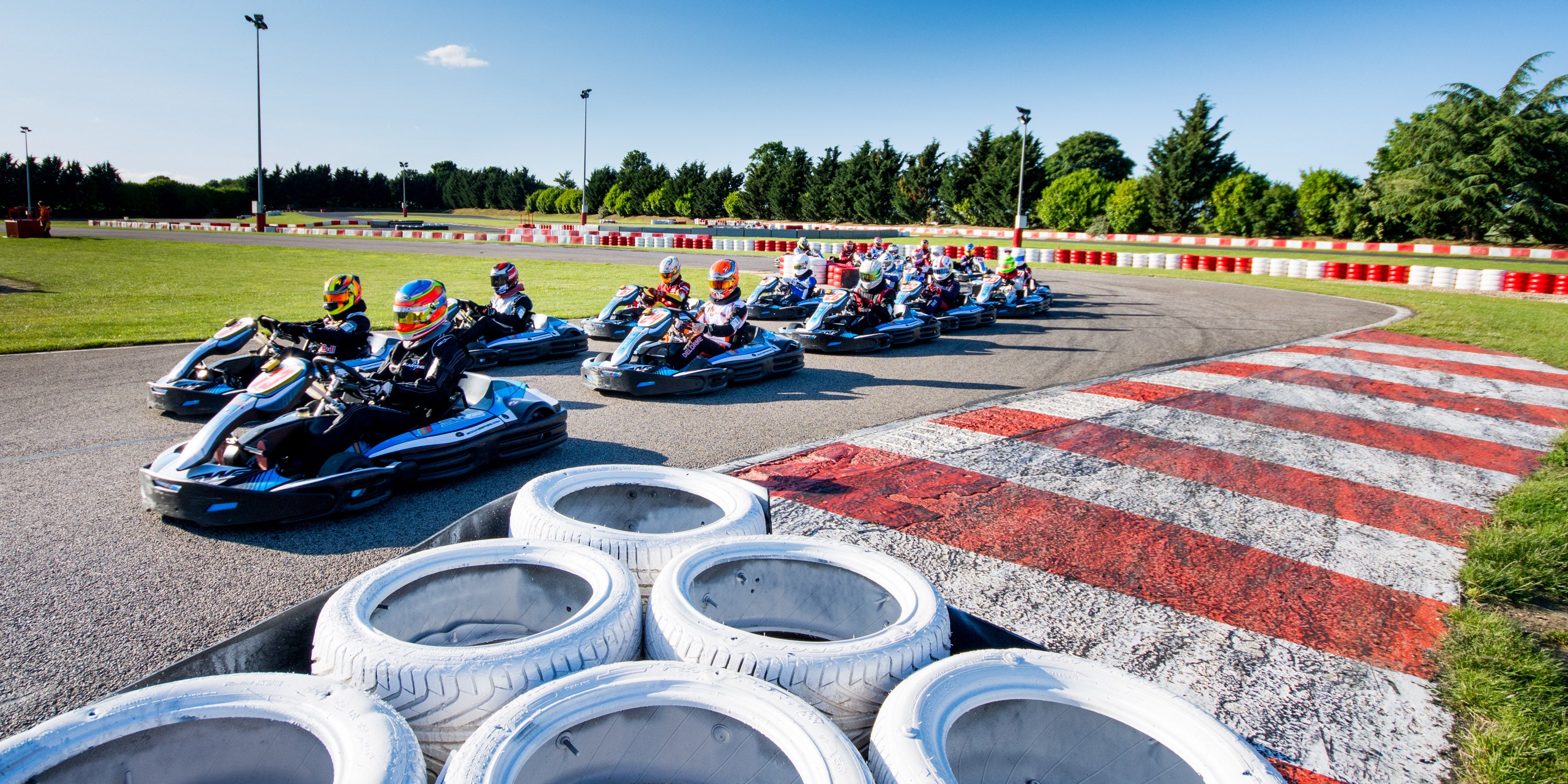In order to get accustomed to the world of go-kart racing, one of the ways to do so is getting a grip on the many terms that you may hear around the paddock. Knowing these terms not only makes things more efficient, but also helps drivers and mechanics alike better understand one another. In this blog, we will discuss some of the karting terminology you may come across in your karting career. This blog will be divided into two parts. First are terms that you will hear in relation to actual on-track racing. The latter part of this blog covers setup jargon that you may hear in relation to setting up your kart.
Racing and On-Track Action
-
Apex
-
This term is one of the first that you will hear the moment you begin getting into karting. The apex is known as the point of a corner that drivers want to drive near to maximize their corner speed, grip and exit. As we’ve covered before, there are three types of apexes, that being the early, middle/geometric, and late apex. Depending on the corner, there is an optimal apex that needs to be taken in order to shave off the most lap-time possible.
-
Drafting and bump drafting
-
Also known as slipstream in Formula 1, drafting happens when one driver gets behind a kart that is in front of them. The kart in front punches a hole in the air for the driver behind, leading to less resistance and more speed. Drafting is most present on straights, as when the drivers reach corners, it is now referred to as dirty air.
-
In some areas, aside from the usual draft, drivers practice what is called bump drafting, which can also be seen in NASCAR. Here, the same concepts of a normal draft apply, with the difference being that the driver gently taps the rear bumper of the kart in front. Aside from gaining a speed advantage, drivers may do this to unsettle the kart in front and get them out of the groove. However, some championships ban the use of this method and penalize those who do so because of the safety risk it possesses.
-
Understeer and Oversteer
-
Understeer and oversteer are fundamental concepts in vehicle dynamics, describing the behavior of a vehicle when cornering.
-
Understeer occurs when the front tires lose traction before the rear tires while the vehicle is negotiating a turn. This causes the vehicle to continue its path straighter than desired by the driver's steering input. Essentially, the front tires are unable to grip the road well enough to maintain the intended trajectory, resulting in a wider turning radius than anticipated. Understeer is often characterized by a feeling of the front end "pushing" or "plowing" wide through the corner, and it tends to be more prevalent when the kart has too much rear grip.
-
On the other hand, oversteer happens when the rear tires lose traction before the front tires during cornering. This causes the rear end of the kart to swing outward relative to the direction of the turn. Oversteer can be induced by factors such as excessive throttle input, lifting off the throttle suddenly, or entering a corner too quickly. In severe cases, oversteer can lead to a loss of control and a spin if not corrected promptly by the driver. It's often characterized by a sensation of the rear of the vehicle sliding or drifting outward from the intended path.
-
Rolling start
-
A rolling start is the way that kart races begin, with the exception of KZ or Shifter Kart categories. Here, drivers warm-up their tires on a formation lap as well as slot into their qualifying positions. At the final corner of the track, drivers will begin to slow down and close up to each other maintaining a constant speed. Once the lights go green or go out, that is where the first lap begins. From a technical standpoint, a rolling start is the only possible option for karts as they need to maintain a certain amount of RPM’s. Otherwise, the kart will either stall or simply shut off.
-
Graining and Degradation
-
Over the course of a race, the tyres will slowly begin to wear out with each passing lap. This is known as degradation, and it is something that can drastically affect your race pace. Drivers put emphasis on tyre management and limiting degradation as it is not enough to be quick, but rather to keep a consistently fast pace over the course of a race.
-
One way to tell the state of the go-kart’s tires is through the graining that might show. Graining is when the surface of the tire develops ripples, often due to excessive heat buildup during prolonged use or aggressive driving. This can occur when the tire's temperature exceeds its optimal operating range, causing the rubber to degrade and form graining on the tread surface.
-
Graining is one of the signs of tire degradation. As a tire slowly begins to degrade, it can significantly reduce grip, and affect the kart’s overall handling. This is why managing tire temperatures and preventing graining is crucial for maintaining consistent performance throughout a race and maximizing the lifespan of the tires.
Setup and Tuning
-
Chassis flex
-
In go-kart racing, chassis flex plays a crucial role in determining the handling characteristics and performance of the kart on the track.
-
A certain amount of chassis flex is desirable in go-karts because it helps to optimize grip and cornering ability. When a kart enters a corner, the chassis flexes, allowing the inside rear wheel to lift slightly off the ground. This reduces the overall contact patch of the rear tires, which can help the kart rotate more effectively through the corner. This phenomenon is known as "weight transfer" and is essential for maintaining traction and achieving optimal cornering speed.
-
Additionally, chassis flex can influence the balance between understeer and oversteer in a kart. By tuning the chassis stiffness, drivers and mechanics can adjust the kart's handling characteristics to suit different track conditions and driving styles. For example, a stiffer chassis may promote more oversteer, making the kart more responsive to steering inputs but requiring careful throttle control to avoid exit slide. On the other hand, a more flexible chassis may provide more stability and grip, but it could sacrifice some responsiveness in tight corners.
-
Mychron
-
Data loggers are essential in not just tracking data, but also using this data to help make the necessary changes. One of the best and most popular options for data loggers is created by Mychron. Their latest model, the Mychron 5S has seen significant improvement from its predecessor, providing more accurate readings. It is certainly a must buy for any go-kart racer looking to see where time gains can be made.
-
TaG
-
This acronym means that a kart is Touch And Go. TaG is a class with a single-speed engine that is a push-button start.
-
Carb Jetting
-
Carb jetting refers to the process of adjusting the air-fuel mixture for the engine's performance under specific operating conditions. The jets control the amount of fuel that is mixed with air before entering the engine's combustion chamber.
-
Jetting is essential for achieving the ideal fuel mixture ratio, which directly impacts engine power, throttle response, and overall performance. Factors such as air temperature, humidity, altitude, track conditions, and engine modifications can all affect the optimal fuel mixture.
-
Dyno testing
-
As the name suggests, Dyno testing in karting involves using a dynamometer (dyno) to measure and analyze the performance of a kart's engine. A dynamometer is a device that applies a load to the engine, simulating real-world conditions, while measuring various parameters such as power output, torque, and engine speed.
-
During dyno testing, the kart's engine is connected to the dynamometer, and the engine is run through a series of tests at different throttle positions and engine speeds. The dynamometer applies resistance to the engine, allowing testers to evaluate its performance characteristics across a range of operating conditions.
-
To save some time on the track, dyno testing is a great tool for racing drivers. This is because it helps simulate real-world track conditions without having to be on the track itself. Furthermore, it can also help identify problems that are there or may come up over time in order for the issues to be troubleshooted immediately.
And that concludes this blog on karting terminology. As you continue your racing career, you are bound to hear more terms that this one blog doesn’t cover. That is why it is important to never be afraid to ask if you are unfamiliar with something, for it will pay off eventually down the line.
If you want to take your racing to the next level, then one of many Kart Class programs will certainly be for you! Ranging from beginner to champions programs, led by 18-time Australian karting champion David Sera, his guidance will not only help you get accustomed to the world of karting, but also elevate your driving and bring you to the winner’s circle!


